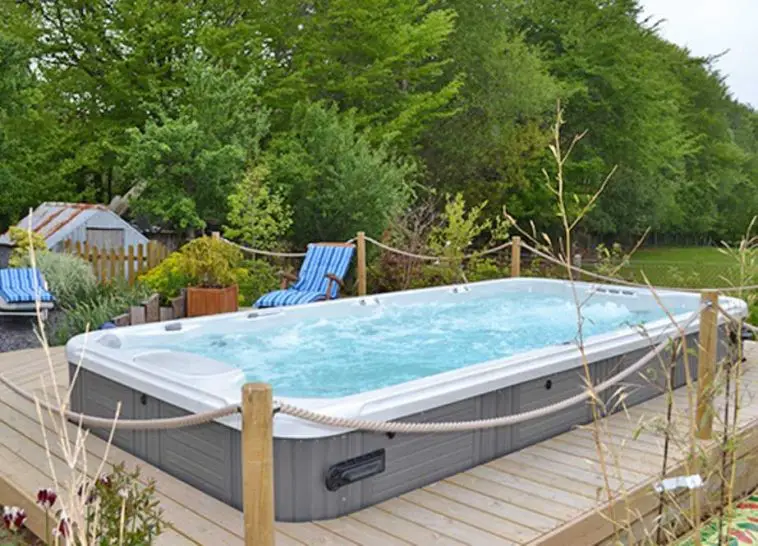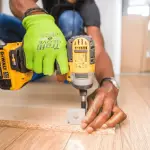Owning a swimming pool is an ultimate dream come true for homeowners, but between the initial installation cost and ongoing maintenance bills, it is a financial commitment that some are unwilling to make. In Canada, a typical inground pool can cost from $20,000 to $50,000. Maintenance will be around 10% to 15% of this initial cost, so you will be looking at a $2,000 to $5,000 bill for upkeep each year.
Fortunately for those who are reluctant to pay such an amount, there are alternatives to inground pools that are worth considering. These options offer the same recreational benefits that traditional swimming pools present, but with cheaper price tags. Innovative products and ideas are allowing more homeowners to have a pool of their own, integrating sustainable features that are cost-effective and simpler to maintain.
1. Above-ground pools
An above-ground option is a lot less expensive compared to an inground pool, costing between $1,000 and $5,000 during installation. Annual maintenance is around $1,000. These kinds of pools typically come in do-it-yourself kits, hence the lower costs for purchasing and installing. Above-ground pools also allow homeowners to “test the waters” and see if owning a pool is for them. The best part is that they can easily be taken down and resold.
Many homeowners make above-ground pools a permanent fixture in their yards. While not as easy on the eyes as inground pools, with the right landscaping, they can look as impressive. There are different types of above-ground pools, depending on material used. The cheapest is probably the inflatable kind. This will cost less than $1,000, with little maintenance needed. Inflatable pools typically last only one or two summers.
If you prefer a sturdier material for an above-ground swimming pool, opt for steel or resin. Steel is one of the most economical materials to use, costing around $1,000 to purchase while maintenance per year will usually fall around $1,200. Steel above-ground swimming pools last about eight years. Meanwhile, those made of resin cost higher, around $5,000, but the advantage lies on the longevity. These pools can last 10 to 15 years.
Once you add in other features in the pool, expect to pay more. Pool heaters, covers, lights and steps are not exactly cheap. With above-ground swimming pools, most homeowners also spruce up with landscaping. To help cover these costs, applying for loans has become a popular financing option for many. This may be a personal loan, retail financing or line of credit, but the most convenient to get is a home equity loan.
With home equity loans, any borrower with equity in their home qualifies, no matter what their income level is. They also come with reasonable rates, more decent than other types of financing, including credit cards. Home equity loans are good for retirees looking for options that do not require withdrawing huge amounts of money from their retirement funds. Read more about home equity loans for financing pool installations.
2. Swim spa
Swim spas are great for those who want to incorporate swimming and exercise in their routines. They also offer benefits that come with massage therapy. While top-of-the-line swim spas can cost $10,000 or more, they are still less expensive to purchase and maintain than traditional pools. Installation does not require major construction. If you have a small yard, a swim spa is the perfect pool alternative for you.
Unlike an indoor pool, a swim spa is able to run year-round at a relatively low cost. Its energy-efficient construction and insulation mean lower utility bills. Swim spas also require less water to operate, so you can save more. As for maintenance, their filtration system can sift out floating debris easily since the surface area is smaller. Meanwhile, the antimicrobial acrylic surface of swim spas means you do not need to scrub it regularly.
Since they are designed for swimming in place with their propulsion systems, swim spas do not allow for laps, but you can still have all the advantages you get from swimming and more. You can do an aqua walk, stretch and strengthen your muscles thanks to the water’s natural resistance and buoyancy. Many use swim spas for improved mobility. Some spas also come with rowing bars and resistance bands for aquatic exercises.
Another advantage of owning a swim spa is that you can use it all year-round. You can adjust the water temperature without worrying about paying several hundreds of dollars in utility expenses. Since swim spas have smaller tanks and built-in insulation, running their pumps and heater will only cost around $1 to $3 per day. This is less than half of what it costs to run an average inground swimming pool.
3. Recyclables
Recycled products like shipping containers and rainwater tanks make for great backyard pools. If you are lucky enough to get your hands on one, you can customize it depending on your needs. Many homeowners look for these types of pools because they can be stylish and modern. They also cost less than a traditional pool. A small shipping container pool, for example, will cost around $17,000 without additional charges.
With shipping container pools, you do not need costly ground leveling work. They can be above-ground and installed on piers or solid platforms. You may get away without a fence surrounding the container, just a single gate blocking off the entry, and still meet the fence requirement. Installation can take a day. A small-sized container pool is about the size of a standard parking spot, so it can be excellent for swimming and racing laps.
Another recyclable product that can be used for pools is a concrete rainwater tank. Precast tanks that are converted to plunge pools can be both functional and aesthetic. They can complement any outdoor garden space and are quite easy to maintain. Concrete tank plunge pools are also great for small yards. Installation can take several days since they need to be craned in, leveled, and fixed with correct plumbing.
Due to their small size, these kinds of pools are not suitable for swimming laps, but if you are after relaxation, they are ideal for you. You can install heaters and use them 365 days a year. Some homeowners also set up jets and bubbles so their tank pools can double as a swim spa. Concrete water tank pools are long-lasting. With proper care and maintenance, they can survive even extreme conditions.



